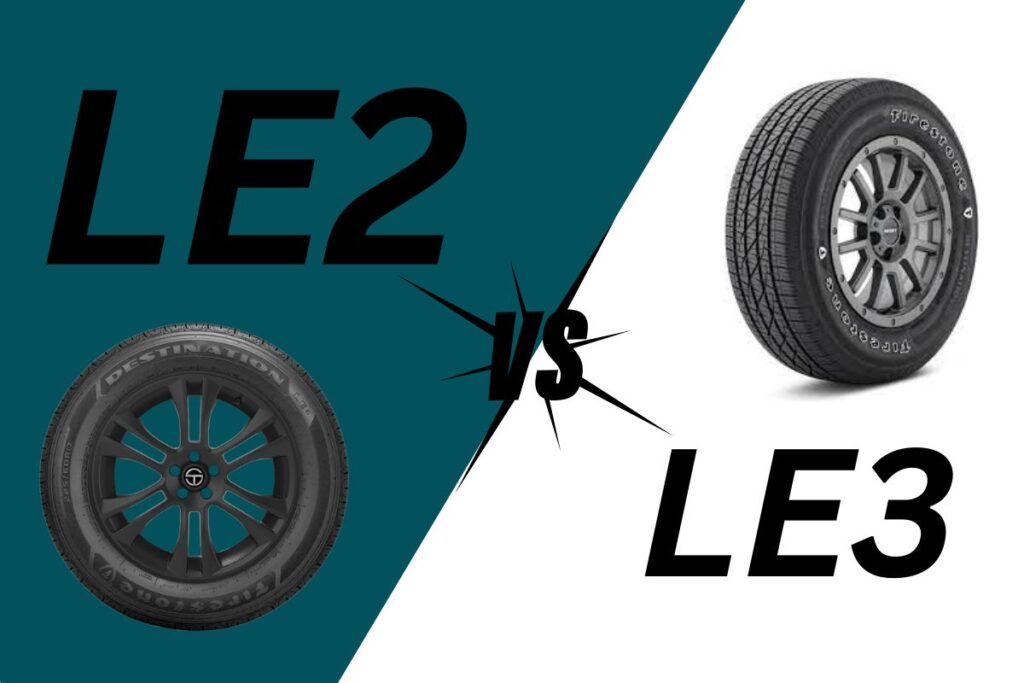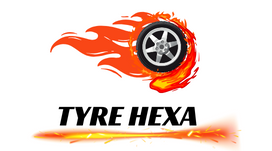The Firestone Destination LE2 and LE3 have advanced tread materials. They work well for everyday drives and long trips. They handle various road types effectively. Now, let’s explore these tire options further.
In my tire tests, the LE2 rocks in snow. It has lots of biting edges and deep treads. On the flip side, the LE3 tops the LE2. It’s quieter and lasts longer. Plus, it gives a smoother, more lasting ride. The LE3 also saves fuel. It has less rolling resistance and better traction on wet roads. While both tires do well on dry roads, the “newer is better” saying fits perfectly here.

Info on Sizes
| Specification | Firestone Destination LE2 | Firestone Destination LE3 |
|---|---|---|
| Rim Size Range | 15 to 22 inches | 15 to 22 inches |
| Speed Ratings | S, T, H | T, H, V (most sizes have H) |
| Load Ratings | SL, XL | SL, XL |
| Tread Depth Range | 10 to 13/32″ | Almost all sizes have 10/32″ |
| Weight Range | 25 to 42 lbs | 21 to 40 lbs |
| UTQG | 520 A B | 700 A B |
| Winter Ratings | M+S | M+S (No 3PMSF) |
| Tread Mileage Warranty | 60k miles | 70k miles |
Tread Pattern
The Firestone Destination LE2 and LE3 have distinct tread patterns. They feature “S”-shaped blocks surrounded by unique “F”-shaped ones, symbolizing the Firestone brand.
Starting with the Destination LE3, its tread pattern has deep sipes. These sipes have enhanced wave-like structures, aiding water evacuation. Compared to the LE2, they are more effective. The LE3 also has improved connectivity in its tread voids. This enhances hydroplaning resistance due to Hydro-Grip Technology.
The Destination LE2 has bigger biters on its shoulders. These biters have sharp edges creating deep grooves. They provide great snow grip but impact treadwear and comfort. Additionally, some lugs lack full-depth sipes, reducing wet traction over time.
Both tires have similar dry braking and handling abilities. This is due to their similar design features.
Fuel Consumption
Rolling resistance affects fuel consumption. It’s influenced by tire design. The Firestone LE3 has a slight advantage due to its lightness.
The LE3’s reduced weight lessens pressure on the road. Its smoother tread enhances fuel efficiency.
In contrast, the Destination LE2 has a more aggressive tread. It’s slightly heavier, leading to lower fuel economy.
Tread Noise
Noise comes from air hitting the tread, especially at the shoulders.
To tackle this, both tires use Whisper Grooves technology. It’s like barriers between the shoulder blocks to block air.
Additionally, they have variable pitch technology to muffle any remaining noise.
In conclusion, both tires perform well, staying quiet across surfaces.
Dry Performance
To understand these tires on dry roads, I tested them. I checked grip, steering, and cornering abilities. Let’s examine each aspect separately.
Directional Grip
The measure of a tire’s traction on straight roads, like highways, is its dry or directional grip. It’s determined by braking distances mostly. When rolling straight, the tire’s pressure is focused in the middle.
The amount of surface contact from there is crucial. Both tires show similar performance values. However, the Destination LE2 seems to have slightly better stopping and accelerating power, in my opinion. This is due to its increased number of biters.
Lateral Traction
The tire’s lateral traction in corners relies on the shoulder’s footprint. It shifts the tire’s weight due to inertia.
Both tires have the same tread pattern. Despite that, they handle laps similarly.
The Firestone Destination LE3 has smoother steering response overall. Its shoulder lugs feature a smoother tread structure than the LE2, providing superior balance for understeering and oversteering.
Winter Performance
Evaluating a tire’s winter performance reveals some interesting results. The Destination LE3 slightly lags in winter traction compared to the Firestone LE2. Both lack the 3 Peak Mountain Snowflake certifications.
Why?
On snowy roads, you need plenty of biting edges to grip. The Firestone LE2 provides just that. Its serrated inner shoulder lugs and sharp block edges scoop up snow, creating better snow-to-snow contact. This matters because snow sticks better to itself than to rubber.
Wet Traction
Wet traction sets apart Firestone Destination LE2 and LE3 tires. Factors affect their performance in this area.
The Firestone Destination LE2 got bad reviews for its poor wet grip. Two main reasons stand out. First, it wears down fast, losing effectiveness. Second, it lacks deep sipes to channel water for traction.
The Firestone LE3 tackles these problems with a tougher rubber. With better siping design, it improves traction on wet roads. Lugs on the LE3 are spaced out for added grip.
The extra grooves help resist hydroplaning, called Hydro-Grip by Firestone.
Tread Life
When looking at tread life, consider UTQG, tread depth, and composition. Firestone Destination LE3 stands out for several reasons. It has a harder tread compound, resisting faster wear. Additionally, it includes a polyamide layer for added durability. Both tires have 2-ply sidewalls.
The UTQG for LE3 is 700, while LE2 is 520. UTQG isn’t a precise tread life measure, but comparing tires from the same brand is helpful. For Firestone Destination LE2, expect nearly 5 times the tread life. In contrast, LE3 offers around 7 times the treadwear resistance.
Vehicles Firestone Destination LE2 Vs LE3 Will Fit
| Vehicle Type | Firestone Destination LE2 | Firestone Destination LE3 |
|---|---|---|
| SUVs | Yes | Yes |
| Crossovers | Yes | Yes |
| Light Trucks | Yes | Yes |
| Pickup Trucks | Yes | Yes |
| Minivans | Yes | Yes |
| Passenger Cars | Yes | Yes |
| All-Terrain Vehicles (ATVs) | No | No |
| Utility Trailers | Yes | Yes |
| Boat Trailers | Yes | Yes |
| Toy Haulers | Yes | Yes |
So, What’s The Verdict?
After analyzing Firestone Destination LE2 and LE3 tires, some key findings emerged.
The older Destination LE2 excels on snow due to better grip. It also shows good dry traction but lacks in steering feedback.
Noise levels are similar between LE2 and LE3 for comfort.
In wet conditions, the LE3 surpasses the LE2 significantly. LE3 has better treadwear, evident from its higher warranty and UTQG rating compared to LE2.
